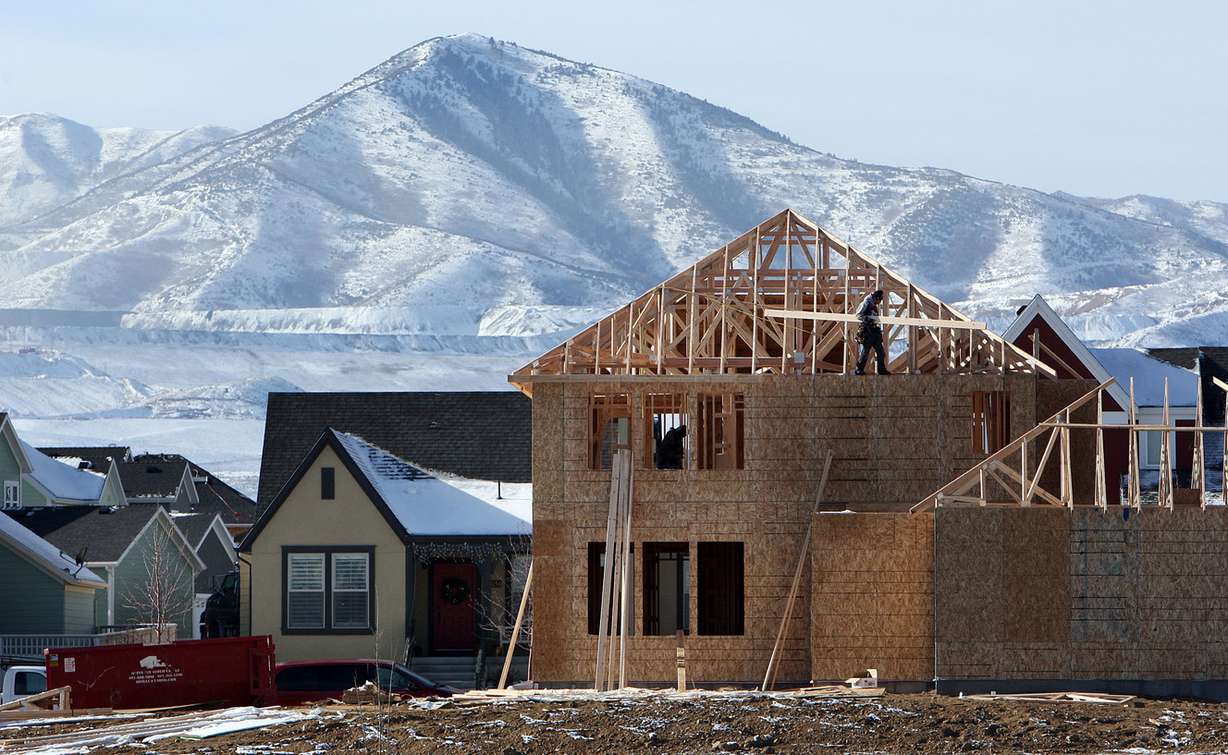Estimated read time: 5-6 minutes
This archived news story is available only for your personal, non-commercial use. Information in the story may be outdated or superseded by additional information. Reading or replaying the story in its archived form does not constitute a republication of the story.
SALT LAKE CITY — Several Utah communities remain among the top in the country for population growth, according to estimates released Thursday by the U.S. Census Bureau.
The new data features a tale of two cities: South Jordan maintains its rank as one of the fastest-growing cities in the country and one of the most populous in Utah, while Vineyard, a town of 5 square miles, is seeing its much smaller populace skyrocket.
Both places, though vastly different, speak to overall economic opportunity and ideal conditions for families, according to Pamela Perlich, director of demographic research at the University of Utah's Kem C. Gardner Policy Institute.
"We're a really fortunate people to live in Utah. It's a place that continues to attract new people. That's just not the case everywhere," Perlich said. "There are many areas of the country where people are having to leave because there's no economic opportunity."
Between the summers of 2014 and 2015, South Jordan's population growth rate of 6 percent earned it a rank of fifth in the country for cities with a population of 50,000 or more. Last July, that population was 66,648 people, according to the Census estimates.
Between 2010 and 2015, the city ranked highest in the U.S. for it's overall growth of 32 percent, or 16,175 people.
It's a lot to absorb, even for residents still new to the city, according to Brian Preece, South Jordan's economic development director.
"There seems to be a stress that comes from long terms of high growth. Things are just changing so rapidly," Preece said. "Sometimes the people who complain the loudest about people coming in are the people that have only been there two or three years."
The growth adds to the challenge of east-west commuting, and providing easy access to the I-15 corridor remains a problem for South Jordan and other cities, he said.
But property values, proximity to Salt Lake City, two LDS temples, recreational facilities, the headquarters of Rio Tinto and other landmarks add to the continuous draw for new residents.
"We have a lot of good employment in town," Preece said.
The city's schools are among the most crowded in the state. Enrollment growth led to 13 school boundary changes last year in the Jordan School District, which has 15 year-round schools and 250 portable classrooms to accommodate as many students as possible.
Enrollment forecasts show the district could climb from 52,324 to 61,575 students in the next five years. For that reason, district leaders are proposing a $245 million bond to build six new schools in the area.
An instant city
What also stands out in the din of population swells along the Wasatch Front is Vineyard, a town whose total population represents only a sliver of Utah County, but whose rate of growth towers over every other city in the state.
That's thanks to redevelopment on the site of Geneva Steel, transforming the area into "an instant city," Perlich said.
From 2014 to 2015, Vineyard's population went from 617 people to 3,195 people, an increase of 418 percent, according to Census estimates. The next highest population growth rate in Utah was in Ophir at less than 13 percent.
"Trying to manage that growth is the difficult part, starting from a very small population, because we're building a staff as well," said Vineyard's finance director, Jacob McHargue.
It's new growth that requires roads, water, utilities, schools and other facilities. At some relief, the town's redevelopment agency, one of the largest in the state, has funded much of the backbone infrastructure, McHargue said.
But keeping up financially remains a challenge because sales tax revenues are based on Census population estimates released a year or two after they're taken.
"Our difficulty is the funding is delayed. So we're providing services for all these residents that we've had for 18 months now, and the revenue hasn't started coming in yet," McHargue said. "It's been challenging."
Young working families continue to pour into the community of 5 square miles, largely thanks to its proximity to I-15 and its three freeway exits, with a fourth on the way. Vineyard also has a FrontRunner station that gives residents other commuting options.
The town is on track this year to issue 1,000 building permits, which will add another 3,000 people, McHargue said. Fifty of those permits were issued Wednesday.
"This trend is going to continue," he said. "While our growth percentage won't be 400 percent next year, I still think it will be above 100 percent."

Nationally comparable
Since the 2010 Census, Utah remains the fifth most rapidly growing state, behind other states including North Dakota and Colorado. Utah grew by 1.7 percent last year.
"That's actually a pretty anemic growth rate by Utah standards, but it puts us among the most rapidly growing states right now," Perlich said.
School enrollment is especially illustrative of shifts in population, which are projected to bring another 52,000 students into Utah's eight public colleges and universities by 2025.
The Utah State Board of Regents on Friday is discussing new 10-year enrollment projections, which show steady annual growth rates of nearly 3 percent over the coming decade.
Foremost among enrollment forecasts is Utah Valley University, which became the state's largest institution last fall. The Orem university is expected to push even further beyond other institutions, approaching 46,500 students by 2025.
It's one of many indications of a broader trend in Utah's population growth, whose epicenter is shifting south of the state's capital city toward the Salt Lake and Utah county line thanks to expanding industry and job opportunities there.
"What used to be two quite distinct metropolitan areas now are really looking more and more like the areas are merging into one large metropolitan region," Perlich said.
Most of the state's fastest-growing cities are close to the county border, including South Jordan, Lehi, Sandy and West Jordan.
Salt Lake City remains Utah's largest city, less than 8,000 people short of the 200,000 population mark. West Valley City, Provo, West Jordan, Orem, Sandy, Ogden and St. George follow in order of population size.
Outside the epicenter of growth, Cache County is seeing slow and steady population increases as Logan crossed the population threshold of 50,000 for the first time last year.










